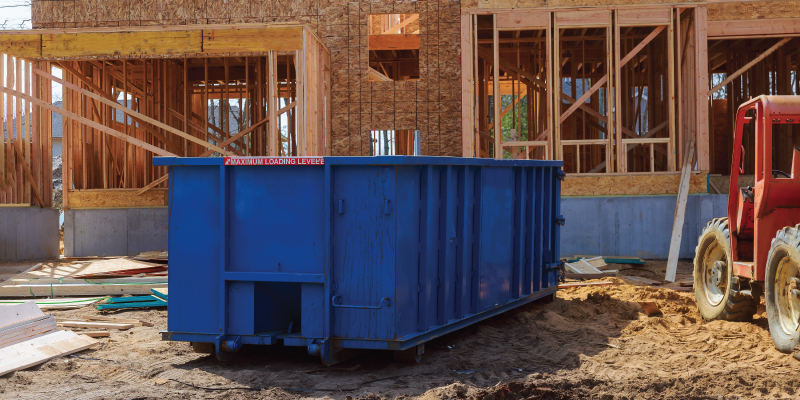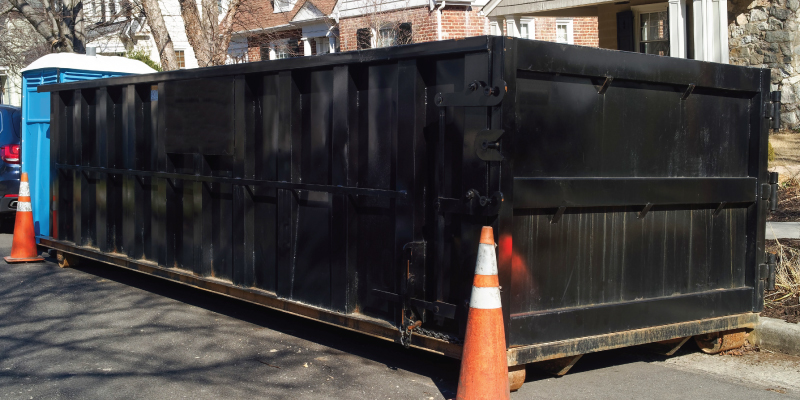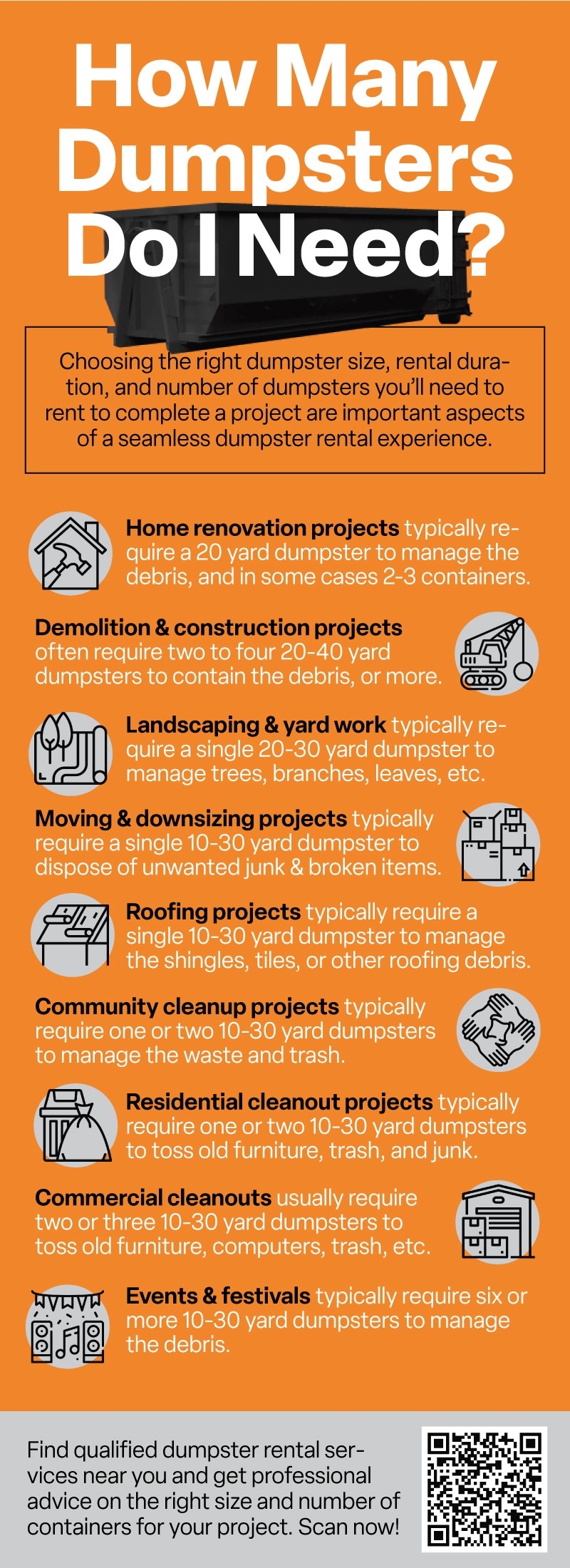
Updated January 9, 2024
Dumpster rentals can be extremely convenient and efficient for managing waste from ongoing projects, from commercial demolition to home remodel projects, basement cleanouts, and everything in between.
This guide will go over the general process of ongoing dumpster rental and how to determine the best dumpster size and how many dumpsters are best for your project needs.
Table of Contents:
- How Ongoing Dumpster Rental Works
- What to Consider When Calculating Dumpster Needs
- How Many Dumpsters You'll Need for Popular Projects
Find dumpster rental services near you
How Ongoing Dumpster Rental Works
Renting multiple dumpsters for an ongoing project involves coordination between the dumpster rental provider and the project manager.
The process typically goes as follows:
-
Assessment of Project Needs: The first step is to assess the scope and scale of the project. Determine the types and amounts of waste that will be generated, as well as the space available for placing dumpsters.
-
Choosing Dumpster Sizes: Based on the project's needs, select the appropriate sizes and types of dumpsters. The most popular sizes include: 10 yard, 20 yard, 30 yard, and 40 yard. Different types of waste may require different containers (e.g., construction debris, green waste, recycling), and some dumpsters may be too big for the designated space, so work with the different companies you speak to about quotes to be sure you choose the best dumpster size for your needs.
-
Contacting Dumpster Rental Providers: Reach out to multiple reputable dumpster rental companies. Provide as many details about the project as you can, including the type of waste, estimated quantities, and the duration for which the dumpsters will be needed. The more companies you speak to and the more quotes you can compare, the better chance you'll have of paying a low price for great services.
-
Getting a Quote: The dumpster rental company will provide a quote based on the information provided. This quote will include the rental fees, any potential additional charges, and the terms of the rental agreement. Read each quote you receive thoroughly so you have a clear understanding of what each quote entails so you can be sure you're making the best choice for your disposal needs.
-
Scheduling and Delivery: Once the quote is accepted, work with the dumpster rental provider to schedule the delivery of the dumpsters. Specify where on the project site the dumpsters should be placed. Make sure the delivery schedule aligns with the project timeline.
-
Project Management: During the project, the project manager or designated personnel should oversee waste disposal activities. Ensure that waste is properly segregated and disposed of in the designated dumpsters.
-
Monitoring Fill Levels: Keep an eye on the fill levels of the dumpsters. If one becomes full before the project is complete, coordinate with the dumpster rental provider to schedule a timely pickup and replacement.
-
Regular Communication with Rental Provider: Maintain open communication with the dumpster rental company throughout the project. Notify them of any changes in project scope, schedule adjustments, or additional dumpster needs.
-
Pickup and Disposal: As dumpsters reach their fill capacity or as the project progresses, schedule pickups with the rental provider. They will transport the filled dumpsters to an appropriate disposal site, ensuring proper waste management.
-
Final Inspection and Closure: Once the project is complete, perform a final inspection to ensure that all waste has been properly disposed of. Confirm with the dumpster rental provider that all rented dumpsters have been picked up.
-
Billing and Documentation: Review the final bill from the dumpster rental company, ensuring that it aligns with the agreed-upon terms. Keep all relevant documentation for record-keeping and potential auditing purposes.
By following these steps and maintaining clear communication with the dumpster rental provider, you can efficiently manage waste disposal for an ongoing project with multiple dumpsters. This helps ensure a smooth workflow, compliance with regulations, and effective waste management throughout the project's duration.
Find dumpster rental services near me
What to Consider When Calculating Dumpster Needs

Several factors should be considered when choosing a dumpster rental size:
Type of Project
The nature of the project plays a significant role. Larger projects, such as whole-home renovations or construction projects, generally generate more waste and may require larger dumpsters. Smaller projects like attic cleanouts or yard cleanups may only need a smaller dumpster.
Volume of Debris
Estimate the amount of debris you expect to generate. Different dumpster sizes accommodate different volumes of waste, and obviously, the more debris you have, the larger the dumpster (or the more dumpsters) you'll need.
Type of Debris
Consider the types of waste, debris, and materials you'll be disposing of. Some waste, like construction debris or bulky items, may take up more space than general household waste. Ensure that the chosen dumpster can handle the specific types of debris from your project.
Read more: Debris Removal: The Complete Guide to Getting Rid of Anything
Available Space
Assess the space where the dumpster will be placed. Ensure there is enough room for the dumpster size you're considering. Check for any overhead obstacles, such as tree branches or utility lines, that may limit the available space.
Weight Limits
Dumpster rentals often come with weight limits. Consider the weight of the materials you'll be disposing of, as exceeding weight limits can result in additional fees. Discuss weight restrictions with the rental providers you get quotes from to compare the weight limits included and at what cost.
Project Duration
The duration of your project is important. If it's a short-term project, one large dumpster may be able to accommodate a higher volume of waste within a shorter timeframe. For longer-term projects, you may need to schedule more frequent pickups, especially if you choose a smaller dumpster.
Local Regulations
Be aware of local regulations and restrictions regarding dumpster placement and size. Some areas may have zoning regulations or restrictions on the size of dumpsters that can be placed on residential or commercial properties.
Recycling Opportunities
If your project involves recyclable materials, consider whether you can separate them for recycling. Some dumpster rental providers offer recycling options, and this can impact the overall size needed for non-recyclable waste.
Budget Considerations
Larger dumpsters generally come with higher rental fees. Consider your budget and balance the cost of renting a larger dumpster with the potential cost savings associated with fewer pickups.
Consultation with Rental Provider
Before making a final decision, consult with the dumpster rental provider. They can offer guidance based on their experience and knowledge of similar projects. Provide them with detailed information about your project for accurate recommendations.
How Many Dumpsters You'll Need for Popular Projects

Home Renovations
Kitchen Remodels
For a standard kitchen remodel, which may include the removal of cabinets, countertops, flooring, and appliances, one or two mid-sized dumpsters (e.g., 20 cubic yards each) is likely sufficient. If the remodel is more extensive and involves major structural changes or additional ongoing work, more dumpsters may be required.
Bathroom Renovations
Bathroom renovations typically generate a moderate amount of waste. A single mid-sized dumpster (e.g., 10 to 15 cubic yards) is often adequate for the removal of old fixtures, tiles, drywall, and other materials. However, larger bathrooms or projects involving structural changes may require additional dumpsters.
Basement Remodel
The number of dumpsters needed for a basement remodel depends on the size of the basement and the extent of the renovation. Larger basements or projects that involve significant demolition, such as removing walls or flooring, may require multiple dumpsters. In such cases, one or more mid-sized to large dumpsters (e.g., 20 to 30 cubic yards each) may be necessary.
Demolition & Construction Projects
New Home Construction
For new home constructions, the number of dumpsters required depends on the size of the home and the amount of construction waste generated. Multiple dumpsters, ranging in size from 20 to 40 yards, will likely be needed throughout different phases of the construction.
Commercial Construction
Commercial construction projects vary widely in size. Larger projects will require potentially dozens of larger 30 or 40 yard dumpsters, while smaller projects may only need one or two. The size and number of dumpsters will depend on the scale of the construction and the types of materials involved.
Wall Demolition
Wall demolition projects may generate a moderate amount of debris. A small 10 yard dumpster is ideal for demolishing just one or two walls, while a medium-sized 20 yard dumpster is often suitable for a more involved wall demolition project.
Structural Demolition
Larger-scale structural demolition projects will generate a significant amount of debris. Multiple large 30 or 40 yard dumpsters may be necessary to accommodate the diverse types of materials involved in structural demolition.
Commercial Gut-Out
The extent of a commercial gut-out can vary. For moderate-sized gut-outs, a medium-sized dumpster, like a 20 yard or 30 yard container, may suffice. For larger projects involving the removal of extensive interior elements, multiple dumpsters or a larger 40 yard dumpster size may be needed.
Exterior Commercial Demolition
Like structural demolition, exterior commercial demolition can produce a substantial amount of debris. Multiple 30 or 40 yard dumpsters may be required to handle materials such as concrete, metal, and other exterior elements.
Breaking Up and Disposing of Old Concrete or Asphalt
Breaking up and disposing of old concrete or asphalt can be heavy and dense. Many dumpster rental companies limit heavy debris, like concrete or asphalt, to only be disposed of in smaller dumpsters, like 10 or 20 yard containers. For small projects, like sidewalk, patio, or average driveway removals, these dumpster sizes are typically sufficient. You may need large dumpsters or multiple 10 or 20 yard dumpsters if there is extensive tonnage of concrete. Consider weight restrictions imposed by the dumpster rental provider when selecting your dumpster size(s).
Keep reading: Concrete Demolition & Removal: Everything Homeowners Need to Know
Clearing Out Old Fixtures and Displays from a Retail Space
The size of the retail space and the type of fixtures and displays being removed will influence the dumpster size. For smaller retail spaces, a medium-sized dumpster may be sufficient, while larger spaces may require larger or multiple dumpsters.
Landscaping and Yard Work
Tree Removal
For tree removal projects, the number of dumpsters needed will depend on the size and number of trees being removed, as well as whether the trees are being chipped or cut into sections. Smaller projects may require a single small to medium-sized dumpster (e.g., 10 to 20 cubic yards), while larger projects with multiple trees may necessitate multiple small dumpsters or larger dumpster sizes.
Large-Scale Yard Cleanups
Large-scale yard cleanups can involve the removal of various materials, including tree limbs, debris, leaves, branches, and other green waste. The size and number of dumpsters needed will depend on the scale of the cleanup. Multiple medium-sized dumpsters (e.g., 20 to 30 cubic yards) or a single larger 40 yard dumpster may be required for extensive yard cleanups.
Land Clearing
Land clearing projects involve the removal of vegetation, trees, bushes, rocks, and other debris to prepare the land for construction or other purposes. The number and size of dumpsters needed will depend on the size of the land and the volume of materials to be cleared. Large-scale land clearing projects may require multiple large dumpsters (e.g., 30 to 40 cubic yards).
Learn more:
- Yard Waste Dumpster Rental Guide
- Professional Yard Waste Removal Services: When and How to Hire a Cleanup Crew
Moving or Downsizing
Clearing Out Unwanted Items Before a Move
The number of dumpsters needed for moving-related cleanouts can vary based on the size of your home, the amount of accumulated items, and the extent of decluttering needed. For a typical residential cleanout before a move, a single medium-sized dumpster (e.g., 10 to 20 cubic yards) might be sufficient. However, if you have a large home or a significant amount of belongings, you may need multiple dumpsters or a larger size.
Downsizing and Decluttering
Downsizing and decluttering projects can vary widely in scale. For smaller projects, a single small to medium-sized dumpster may be enough. A 20 cubic yard dumpster can typically handle the disposal of furniture, household items, and other unwanted belongings. Larger projects or those involving extensive downsizing may require multiple dumpsters or larger sizes, like a 30 or 40 yarder.
Roofing Projects
Roof Replacement
For a typical residential roof replacement, one 10-20 yard dumpster is likely sufficient. The best dumpster size for your roof replacement will depend on the square footage of the roof and the type of roofing materials being removed. Asphalt shingles, for example, may require less space than heavier materials like tile or slate.
For larger commercial or industrial roof replacement projects, a larger 30 or 40 yard dumpster or multiple dumpsters may be necessary. The roofing contractor or waste management company handling the project can provide a more accurate estimate based on the specific details.
Roof Repairs
The number of dumpsters needed for roof repairs will depend on the extent of the repairs and whether the repairs involve removing and replacing roofing materials. For most repair jobs, a single small dumpster will suffice.
If the repairs are part of a larger maintenance project or involve a significant portion of the roof, additional dumpsters may be required.
Community Cleanup Events
Neighborhood Cleanups
For smaller neighborhood cleanups, one or two 10-20 yard dumpsters may be sufficient. The size of the dumpsters will depend on the scale of the cleanup and the types of items being disposed of.
If the neighborhood cleanup is part of a larger community initiative or involves multiple streets, additional dumpsters may be needed. The organizers should consider factors such as the number of participants and the expected volume of waste.
Community Beautification Projects
The dumpster needs for beautification projects can vary widely. If the project involves activities like landscaping, gardening, or small construction projects, the waste generated may be moderate, and one or two 30-40 yard dumpsters could be enough.
Larger beautification projects, such as renovating public spaces or installing new features, may generate more significant amounts of waste, requiring multiple dumpsters.
Keep reading: Cleaning Up the Community: The Impact of Dumpster Rental on Neighborhood Cleanliness
Residential Cleanouts
Estate Cleanout
The number of dumpsters needed for an estate cleanout will depend on the size of the residence and the volume of personal belongings. One or more 20-30 yard dumpsters may be required, especially if there are large furniture items, appliances, or a significant amount of possessions to be removed.
Basement Cleanout
The size of the basement and the amount of clutter or items to be disposed of will influence the number of dumpsters needed. For a standard residential basement cleanout, one or two 10-20 yard dumpsters are likely sufficient.
If the basement contains a large amount of accumulated debris, old furniture, or other items, additional dumpsters may be necessary.
Read on: A Step-by-Step Guide to Basement Cleanouts
Garage Cleanout
The size and contents of the garage will determine the dumpster requirements. A single 10-20 yard dumpster is often adequate for a typical residential garage cleanout.
If the garage is used for storage and has accumulated a significant amount of items over time, or if there are large items like old appliances or furniture to be disposed of, more dumpsters may be needed.
Whole-Home Cleanout
For a whole-home cleanout, you may need multiple dumpsters, especially if the property is large or if there is a significant amount of accumulated belongings, furniture, and debris.
The size of the dumpsters will also depend on the extent of the cleanout. Residential cleanouts often involve using 20-yard or 30-yard dumpsters. The waste management company can provide guidance based on the estimated volume of debris.
Consider sorting items during the cleanout process to separate recyclables and items suitable for donation. This can help reduce the overall volume of waste.
Apartment Cleanout
The number of dumpsters needed for an apartment cleanout will generally be less than for a whole-home cleanout. A single dumpster might be sufficient for a standard apartment cleanout.
The size of the dumpster will depend on the amount and types of items being disposed of. Smaller dumpsters, such as 10-yard or 15-yard containers, may be suitable for apartment cleanouts.
Like with a whole-home cleanout, consider recycling or donating items that are still in good condition to minimize the amount of waste.
Hoarding Cleanout
For less severe hoarding situations or smaller living spaces, one or two dumpsters in the range of 20 to 30 yards might be sufficient.
In moderate cases with larger living spaces, more items, and clutter, the need for dumpsters may increase. Two to four dumpsters, potentially in the range of 30 to 40 yards, could be required.
In cases of severe hoarding with extensive clutter throughout a large living space, the number of dumpsters needed could be higher. Multiple dumpsters, potentially ranging from 40 yards or more, might be necessary.
Hoarding cleanouts are complex, and we strongly recommend collaborating with professionals experienced in handling hoarding situations for this type of project. These professionals can assess the extent of the clutter, plan the cleanout process, and work with waste management companies to determine the appropriate dumpster requirements and safely remove all waste, debris, and junk.
Commercial and Industrial Cleanouts
Clearing Out Office Spaces
For a standard office space clearout, one or two 10-20 yard dumpsters might be sufficient. The size of the dumpsters will depend on the amount of furniture, equipment, and other items to be removed.
Find out more: How to Save Money On Your Commercial Business Cleanout
Clearing Out Old Signage, Furniture, and Fixtures
Signage can vary in size and material. If the signage is relatively small, it may be possible to fit it into a standard dumpster. However, for larger signs or signs made of bulky materials, you may need a larger dumpster.
The size and quantity of furniture and fixtures will heavily influence the dumpster needs. Larger items like desks, chairs, and display fixtures may require larger dumpsters or multiple smaller ones.
Consider the dimensions of the furniture and fixtures to estimate the necessary dumpster space. For example, if there are many large pieces, you may need larger dumpsters, such as 20 or 30 yards.
The volume and size of old signage, furniture, and fixtures will determine the dumpster requirements. If these items are bulky or there is a large quantity, multiple dumpsters will likely be needed.
Consider recycling options for items in good condition or materials that can be repurposed to minimize the amount of waste.
Warehouse Cleanouts
The number of dumpsters needed for warehouse cleanouts can vary widely based on the size of the warehouse and the amount of inventory or equipment to be disposed of. Large warehouses may require multiple dumpsters, and the size of the dumpsters will depend on the scale of the cleanout.
Removing Items Left Behind in a Foreclosed Home
Assess the square footage and the number of rooms to get an idea of the scale of the cleanout. Naturally, larger homes will require more dumpsters than smaller homes.
For example, for substantial cleanouts, 20 to 30 yard dumpsters are often the most suitable size. However, you should also consider the presence of large and bulky items, like furniture and appliances or copious amounts of trash bags. These situations will likely require larger dumpsters, like 40 yarders, or multiple 20 yard containers if larger dumpster sizes won't fit in your driveway or on your property.
Removing Items Left Behind in a Rental Unit
Just like cleaning out a foreclosed home, you should start by assessing the square footage and number of rooms in the rental unit, along with the amount of debris and junk in each room, to get a better understanding of the amount of waste you'll need to dispose of. The bigger the rental unit and/or the more trash inside the rental unit, the more dumpsters you'll need or the larger the dumpsters you rent will need to be.
For a large rental unit full of junk, two 20 yard dumpsters or a single 40 yard dumpster are both good options in most cases. For extreme cases or in situations with lots of bulky items, three or four 20 yard dumpsters may be needed.
Learn more: Dumpsters: The Landlord's Secret Weapon for Streamlining Turnover
Events and Festivals
Large Music Festival
While it's challenging to provide a specific number without detailed information about the festival, a large music festival could potentially require a significant number of dumpsters, ranging from dozens to over a hundred, depending on the scale and features of the event.
It's recommended to work closely with a waste management company or professionals experienced in event waste management. They can conduct a site assessment, consider the specific details of the festival, and provide guidance on the appropriate number and sizes of dumpsters. Additionally, they can assist in planning for recycling and composting initiatives to reduce the overall volume of waste.
Here are some general considerations that can be helpful to know before reaching out to dumpster rental services for quotes:
- Event Duration: The longer the festival, the more waste is likely to be generated. Multi-day events may require more dumpsters compared to single-day festivals.
- Expected Attendance: The number of attendees directly influences the volume of waste generated. Larger festivals with higher attendance will require more dumpsters.
- Activities and Vendors: Consider the types of activities, vendors, and services present at the festival. Events with a variety of food vendors, merchandise booths, and other services will generate more waste.
- Waste Generation Rate: Assess the waste generation rate based on previous events or industry standards. This can help estimate the volume of waste and the necessary dumpster capacity.
- Recycling and Composting: If the festival emphasizes sustainability and includes recycling and composting initiatives, separate dumpsters may be needed for recyclables and organic waste.
- Waste Sorting Stations: Implement waste sorting stations throughout the festival grounds to encourage attendees to separate recyclables, compostables, and general waste.
- Local Regulations: Be aware of local waste disposal regulations and coordinate with local waste management authorities to ensure compliance.
- Vendor Requirements: Communicate waste management requirements to vendors, including guidelines for waste separation and disposal practices.
- On-Site Monitoring: Have a waste management team on-site to monitor dumpster levels and coordinate timely pickups to prevent overflow.
- Previous Event Data: If applicable, use data from previous festivals to estimate the number of dumpsters needed based on waste generation patterns.
Community Event
Just like any event, the number of dumpsters needed for a community event can vary quite a bit depending on the event size, duration, and activities taking place. For a small to medium-sized community event, a few 20-40 yard dumpsters is likely sufficient, while larger events might require a more extensive waste management plan that involves swapping out multiple dumpsters multiple times throughout the duration of the event.
Local Fair
While it's challenging to provide a specific quantity of waste—and therefore, a dumpster plan recommendation—without knowing the details of a particular town fair, it's common for events to produce several tons of waste, especially if they attract a large number of visitors.
Six or more 10-20 yard dumpsters are often needed for these types of events, or three or more larger 30-40 yard dumpsters.
The trend toward incorporating more sustainable practices, such as recycling and waste reduction initiatives, has been gaining traction in recent years, helping to increase the use of recycling dumpsters, minimize the number of waste dumpsters used, and the reduce the overall environmental impact of these events.
Local municipalities or organizers of the town fair may have historical data or records from previous events that can provide insights into the typical waste generation patterns for their specific fair and the number of dumpsters, dumpster sizes, and drop-off/pick-up schedules used in the past. This information can be valuable for planning waste management strategies and implementing sustainability initiatives for future events.
Find out more: Dumpster Rental for Events and Festivals: Managing Waste Responsibly
Fire or Water Damage Restoration
Cleanout After Fire or Water Damage
The size and number of dumpsters needed to clean out your house after fire damage depend on various factors, including the extent of the damage, the size of your house, and the volume of debris and damaged items.
For small to medium cleanouts with limited debris, a single 10 or 20 yard dumpster will likely be sufficient for disposing of damaged items.
For larger cleanouts with significant damage, a 30 or 40 yard dumpster will likely be needed, or upwards of three or more 10-20 yard dumpsters.
Fire Damaged Building Demolition
Handling debris from a fire-damaged house demolition requires careful consideration of the size of the house and the amount of debris inside the home. For a demolition project, multiple large dumpsters are typically used to accommodate the significant amount of debris.
One or two 30-yard dumpsters are typically suitable for small to medium demolition projects. For large-scale demolition projects, two or more 40-yard dumpsters are usually the go-to choice.
Read more: Introduction to Fire Damaged Building Demolition


